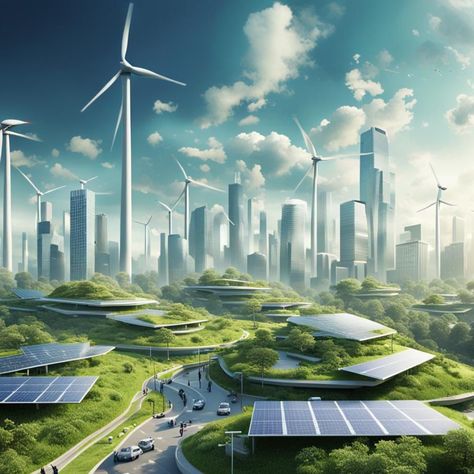As the world faces increasing environmental challenges, renewable energy technologies have emerged as critical solutions for a sustainable future. These technologies not only reduce our dependence on fossil fuels but also help combat climate change and support energy independence. In this article, we’ll explore the top renewable energy technologies that are revolutionizing the energy sector and shaping a greener tomorrow.
Table of Contents
Solar Power: Harnessing the Energy of the Sun
What is Solar Energy?
Solar energy involves capturing the sun’s radiation and converting it into electricity or heat. This renewable energy source is one of the most widely adopted forms of clean energy today. Solar panels, also known as photovoltaic (PV) cells, absorb sunlight and generate electricity without emitting harmful pollutants.
Benefits of Solar Power
- Abundant Resource: Solar energy is available everywhere, making it a reliable resource.
- Low Maintenance Costs: Solar systems require minimal maintenance once installed.
- Scalability: Solar panels can be used for residential homes, commercial buildings, and even large-scale solar farms.
Wind Energy: Powering the Future with Wind Turbines
What is Wind Energy?
Wind energy is generated by converting wind currents into electricity using wind turbines. These turbines consist of large blades that capture wind, turning them into rotational energy, which is then converted into electrical power.
Advantages of Wind Energy
- Clean and Renewable: Wind energy produces no emissions and is a renewable resource.
- Cost-Effective: With technological advancements, wind energy has become one of the most cost-effective renewable energy options.
- Large Potential: Wind power can be harnessed onshore and offshore, making it versatile and scalable.
Hydropower: Energy from Flowing Water
What is Hydropower?
Hydropower, or hydroelectric power, harnesses the energy of flowing water to generate electricity. Dams and water turbines are commonly used to capture the movement of water, turning mechanical energy into electrical energy.
Why is Hydropower Important?
- Consistent Power Generation: Hydropower provides a stable and continuous energy source.
- Low Greenhouse Gas Emissions: It is a clean source of energy that generates minimal emissions.
- Supports Water Management: Dams used in hydropower systems can also help in flood control and water storage.
Biomass Energy: Turning Organic Matter into Fuel
What is Biomass Energy?
Biomass energy comes from organic materials like plant waste, wood, and agricultural residues. These materials are burned or converted into biofuels to generate electricity or heat.
Benefits of Biomass Energy
- Waste Reduction: Biomass helps recycle organic waste, turning it into usable energy.
- Renewable Source: Biomass is a renewable resource, as plants and organic materials can be replenished.
- Carbon Neutral: Biomass energy is considered carbon neutral because the carbon dioxide it releases was initially absorbed by plants during their growth.
Geothermal Energy: Tapping into the Earth’s Heat
What is Geothermal Energy?
Geothermal energy uses the heat stored beneath the Earth’s surface to produce electricity and provide heating. This energy is captured through geothermal power plants, which use steam or hot water from underground reservoirs.
Advantages of Geothermal Energy
- Consistent and Reliable: Geothermal energy provides a constant energy supply, unaffected by weather conditions.
- Small Environmental Footprint: It has a minimal impact on the environment compared to other energy sources.
- Long-Term Sustainability: Once the infrastructure is in place, geothermal plants can operate for decades with little maintenance.
Emerging Technologies: The Future of Renewable Energy
While solar, wind, hydropower, biomass, and geothermal energy are well-established, new technologies continue to emerge, promising even more efficient and sustainable solutions. Some exciting innovations include:
1. Tidal Energy
Tidal energy captures the power of ocean tides to generate electricity. Although still in its early stages, this technology has great potential in coastal regions.
2. Hydrogen Fuel Cells
Hydrogen fuel cells produce electricity by combining hydrogen and oxygen, emitting only water as a byproduct. This clean technology has applications in transportation and energy storage.
3. Perovskite Solar Cells
Perovskite solar cells are a next-generation solar technology with higher efficiency and lower production costs than traditional silicon-based solar cells.
Conclusion
The future of renewable energy is bright, thanks to advancements in technology and growing global awareness of environmental sustainability. From solar and wind power to emerging innovations like hydrogen fuel cells, these technologies are key to reducing carbon emissions and creating a cleaner, greener world. As more investment and research go into renewable energy, we can expect even greater breakthroughs that will shape the energy landscape for years to come. By adopting these technologies, we can ensure a sustainable and environmentally friendly future for generations to come.
